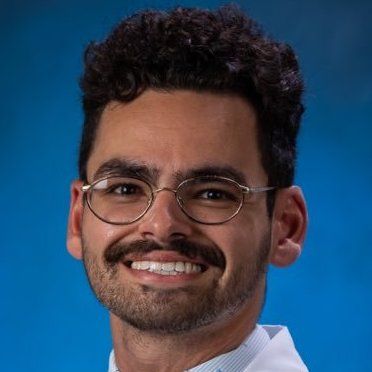News
Article
ChatGPT Could Help Ophthalmology Patient Literacy
Author(s):
An analysis of the AI tool showed it could help translate complex ophthalmology research for various patient levels of comprehension.
Aidin Spina
Credit: Twitter

Language model-supported artificial intelligence (AI) programs like ChatGPT may help ophthalmologists educate patients with low health literacy in their practice, according to new data.
In new research presented at the American Academy of Ophthalmology (AAO) 2023 Annual Meeting in San Francisco, CA, last week, at team of California-based investigators reported data that which show the popular AI program may even help to eventually reduce dropped visits and treatment inadherence among ophthalmic patients—a pair of trends that which burden US specialty practices.
Led by Aidin Spina, a student at University of California Irvine School of Medicine, investigators sought to interpret the potential of ChatGPT in transforming research abstracts; transforming patient education materials (PEMs); and generating De Novo information based on patient prompts.
“Generative language models like ChatGPT show significant potential as educational tools for a wide demographic,” they wrote. “One example is the use of (models) to simplify complex text, particularly within medical contexts where low health literacy is prevalent. Can generative language models improve medical text for patients of low health literacy?”
The team compiled 70 abstracts from 4 glaucoma journals and PEMs from the American Glaucoma Society. Their prompt for Chat GPT-4 was to rewrite the abstract text at a 5th grade reading level, only including information derived from the original text and nowhere else. They analyzed the readability of abstracts and PEMs via Flesch-Kincaid Grade Level (FKGL) and Flesch-Kincaid Reading Ease (FKRE) both before and after the GPT-4 prompt. Additionally, the Latent Semantic Analysis (LSA) was used to assess the similarity of content.
For De Novo information generation, investigators used a standardized prompt regarding patient glaucoma management comprehension iterated with output requests for a half-dozen education levels: 5th and 8th grade; high school; Associate’s degree; Bachelor’s degree; Doctorate degree. Outputs were again assessed via FKGL and FKRE.
Regarding transformation readability, investigators observed that abstracts and PEMs were both significantly easier to read post-GPT-4 prompt. Abstracts reported a 30% mean reduction in FKGL and 66% increase in FKRE; PEMs reported a 28% reduction in FKGL and 19% increase in FKRE.
LSA results additionally showed GPT-4 has an ability to maintain content similarity while simultaneously simplifying text. De Nov-related prompts showed GPT-4’s ability to product outputs across the wide range of statistically different reading levels.
Though the assessment was limited by a cost of access for patients—currently approximately $20 per month—investigators concluded the study showed GPT-4 provided simplified medical text without modifying its complex content. The model additionally produced outcomes for various reading and comprehension levels.
“Patients may dynamically interact with the ChatGPT chatbot to request information tailored to their education level, from verified sources,” investigators concluded. “GPT-4 could potentially improve drop compliance and outcomes by increasing patient understanding. Validation in a clinical setting is currently underway.”
Spina and colleagues noted they will be working to combine said functions with new Microsoft Bing access to generate outputs for patients that sources information from verified sources such as AAO.
References
Spina A, Andalib S, Fox A. Tailoring Glaucoma Educations Using GPT-4: Addressing Health-Care Disparities in Patient Comprehension. Paper presented at: American Academy of Ophthalmology 2023 Annual Meeting. San Francisco, CA. November 2 – 5, 2023.





